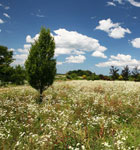At a time when real estate developers race to plant their flag in the next new market just over the horizon, Baystone Development brings new life to familiar surroundings, focusing exclusively on adaptive reuse. “We’re social scientists that put our money where our mouth is. We create new value and uses in an area that has been overlooked, outmoded, or abandoned,” says Steven Zieff, director of project management and business development. “We’re interested in projects that lead to our own level of satisfaction and that play better in the world. That’s our legacy.” Baystone has pursued that legacy in the Greater Boston Area for 40 years.
Zieff says adaptive reuse is attractive because there already are patterns of use and indicators of the value of an area. “When out in the undeveloped areas, the margins are low because it’s easier to enter the marketplace, but the ability to create a market is uncertain,” Zieff says. “With adaptive reuse, it’s easier to convey a value to appraisers, lenders, and marketers.”
Many developers stay away from older, existing properties because they fear the uncertainties and hidden pitfalls from previous uses: underground structures, contaminated soil, asbestos, etc. Not Baystone. “Pre-existing environmental issues are determinable by good due diligence,” Zieff says. “We know the questions to ask about soil conditions and other concerns, and we understand where the value is.”
Even with an experienced team, not every old building or site is a slam-dunk deal. “Sometimes we have discussions on whether or not it is worth it—whether we have the stomach, the pocketbook, and the willingness to pursue it,” Zieff says. “We’re sort of old-fashioned. We’re not pulling the trigger on a project until we understand it.”
When that scrutiny leads to a viable vision, Baystone works to bring others along. That was the case with Cronin’s Landing, the redevelopment of the 507,000-square-foot Grover Cronin Department Store on the Charles River in Waltham, Massachusetts.
“As a result of the closed store and a lack of activity, the area was blighted. When we took bankers out there to see it, some of them looked at it askance,” Zieff says. “But, it was close to Boston, close to public transit, and for those that did get it, it gave rise to the gentrification of Waltham, Newton, and beyond.”
Todd MacDowell, the firm’s LEED expert, adds that Baystone looks beyond property lines. “We typically look outside the realm of our borders,” he says. “We address our own needs, but also those of the town and the region. That is part of the obligation.”
The company also is a leading industry voice and is actively involved in conferences with the Urban Land Institute, the American Planning Association, and in case studies at the Harvard Graduate School of Design.
“We’re strong advocates of advancing the art [of real estate development],” Zieff says. “We don’t treat our position lightly. We realize the way we do development doesn’t fit everyone, but it resonates with many people how this process is community and entitlement friendly.”

Legacy Farms, a current Baystone project, encompasses more than 700 acres in Hopkinton, MA, that, according to Steven Zieff, “had been fairly beat up over the years.” Predevelopment work on 225 acres of residential, retail, and office space began in 2007, and by the end, more than 500 acres will be restored as open green space.

